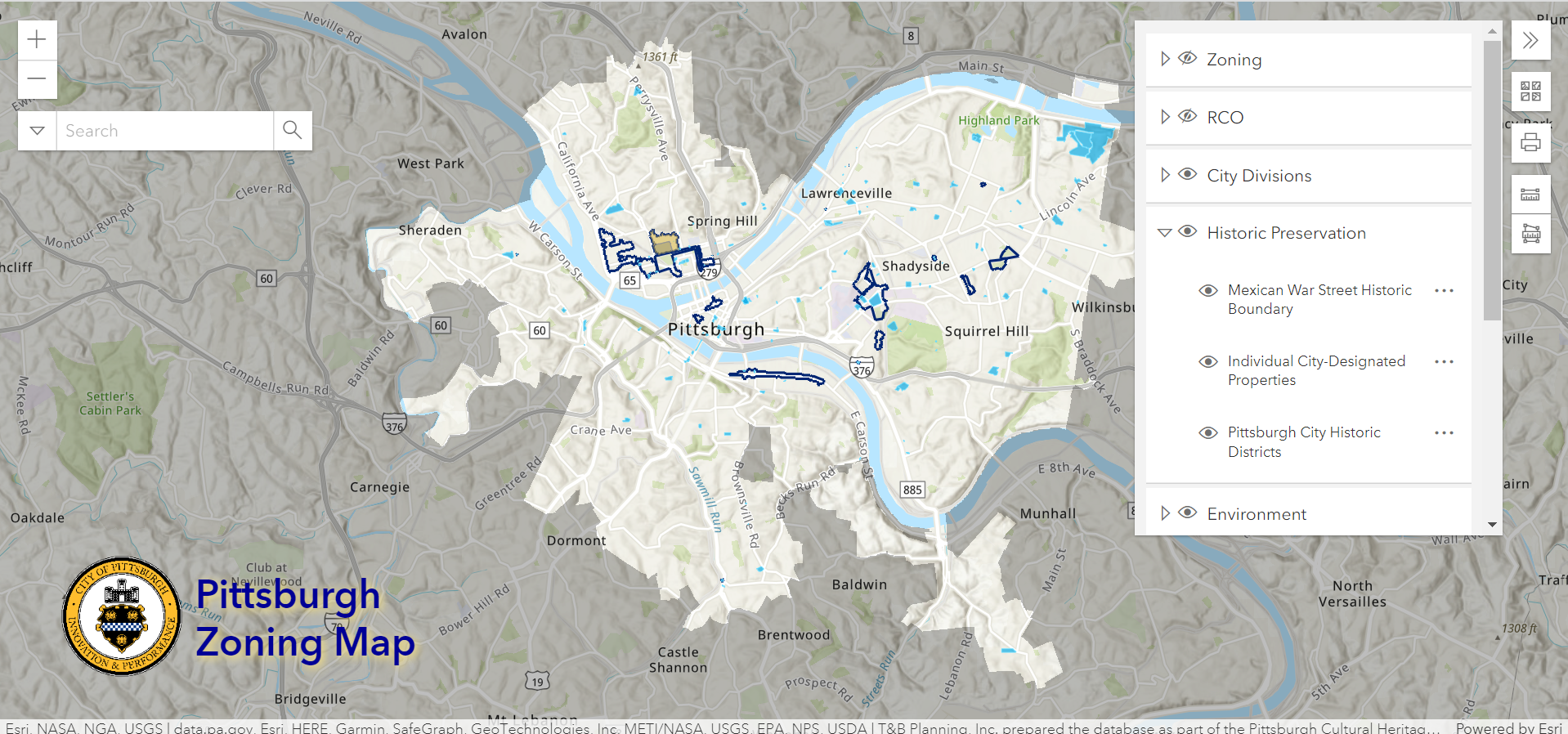Pittsburgh Zoning Map - Historic Layers
By Carolyn Ristau
Introduction
Pittsburgh’s interactive zoning map includes many layers besides the zoning districts, most of which relate to requirements within or adjacent to the zoning code. For an overview on how to use the interactive zoning map, see our introductory post.
To select different layers, click the stack of paper in the upper right corner. The layers available are listed below. Today’s post features the historic layers, pictured above and in bold text below.
Zoning
Zoning Districts
Zoning Districts Outlines
Zoning Max. Height Overlay
Height Reduction Zone Overlay
1500’ Major Transit Buffer
Parking Reduction Areas
North Side Commercial Parking Prohibited Area
Baum Centre Zoning Overlay
Inclusionary Housing Overlay District
RCO (Registered Community Organization) Areas
City Divisions
DPW Divisions
Neighborhoods
Council Districts 2012
Council Districts 2022 (Current)
Wards
Historic Preservation
Individual City-Designated Properties
Pittsburgh City Historic Districts
Environment
RIV Riparian Buffer (125 Feet)
Stormwater Riparian Buffer
Floodplain Areas
Landslide Prone
Potential Steep Slopes Overlay Area
Undermined Areas
Addresses
Allegheny County
City Boundaries
Imagery 2021
The Historic Layers
Overview
There are three historic layers available on the map:
Individual City-Designated Properties: The solid blue polygons indicate locally designated historic landmarks, including historic structures, historic sites, and historic objects. To see the name of the historic landmark:
Click within the boundaries of the polygon
Use the arrows to navigate between the pop-up windows as necessary
Pittsburgh City Historic Districts: The navy blue outlines indicate locally designated historic districts. To see the name of the historic district:
Click within the boundaries of the outline for the district in question
Use the arrows to navigate between the pop-up windows as necessary
Relationship with Zoning
Most exterior work proposed on a local historic landmark or on a property within a local historic district requires historic review. However, not all projects with exterior work that require historic review will require zoning review (e.g.: exterior painting) and not all projects with exterior work that require zoning review will require historic review (e.g.: work not visible from the right-of-way).
Zoning staff check all zoning applications with exterior work to see if they are for a historic landmark or are in a historic district. If either condition applies, it will be sent to the historic preservation planners to verify if historic review is required.
For More Information
Pittsburgh’s historic preservation regulations are found in Title 11 of the City Code. City Council is the authorized body to designate “Historic Structures, Historic Districts, Historic Sites and Historic Objects.” The Historic Review Commission reviews proposed exterior alterations with the administrative support of the historic preservation planners in the Division of Zoning and Development Review.
Challenges
Any project that requires review by the Historic Review Commission (HRC), or any other board or commission of the City, will need to budget additional time into the review and permitting stage of the project. In addition to the time required for the HRC to meet, review, and deliberate, if the project is also within the boundaries of a Registered Community Organization, a Development Activities Meeting with the community will be required at least 30 days prior to the HRC hearing.
Conclusion
Start with Pittsburgh’s interactive zoning map to check if your project is a locally designated historic landmark or within a locally designated historic district. If it is, use the map to check if it also is within the boundaries of a Registered Community Organization. If these conditions are met, make sure your project includes the appropriate documentation for these processes and has budgeted additional time for the review process.





